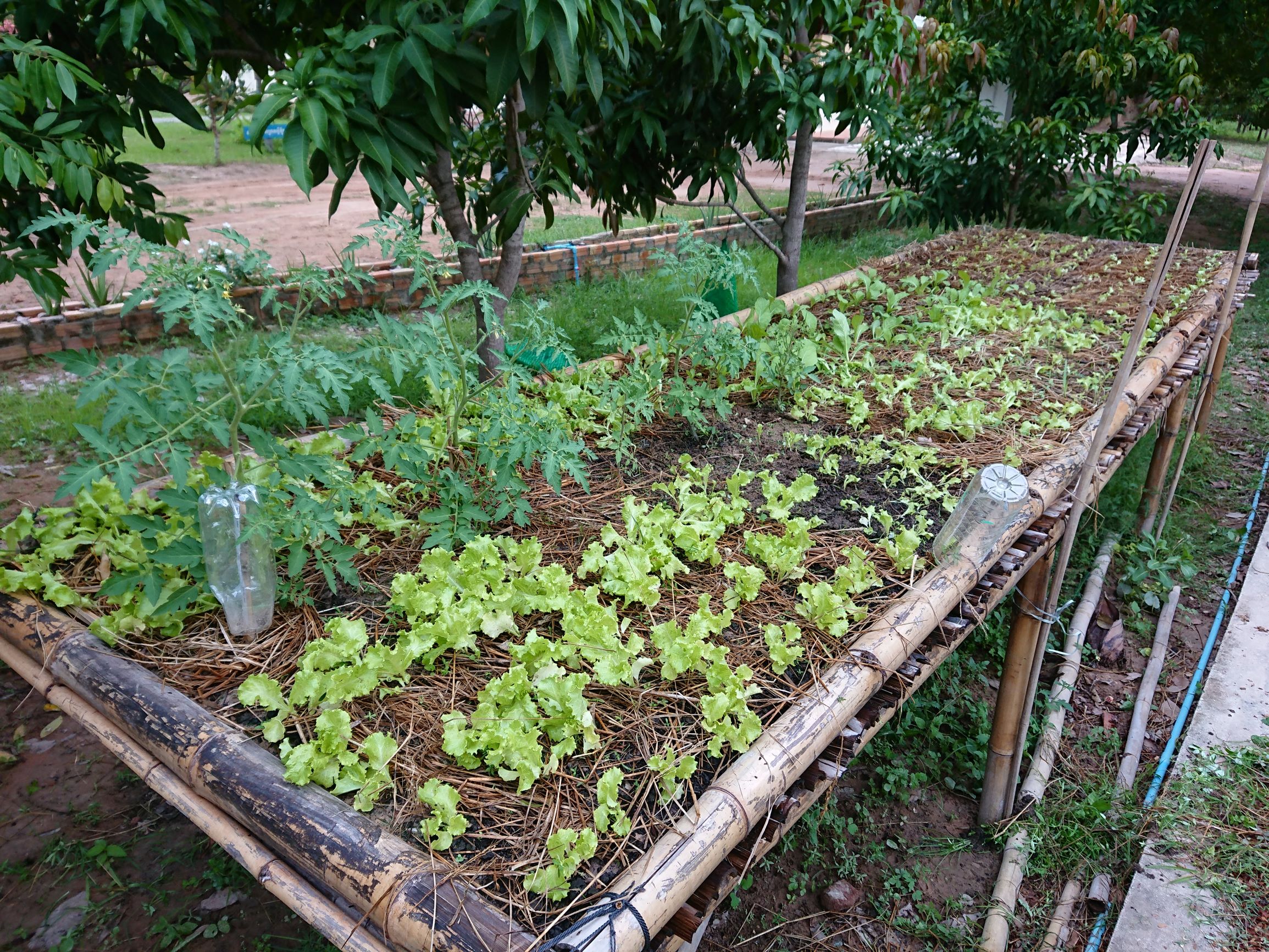Marie Hooker, intern in the agroecology program, arrived in Siem Reap at the end of August, right in the middle of the rainy season. Here she explains the findings and issues she noticed during this important period in Cambodia.
Cambodia’s climate is tropical and humid. During the year, a dry season alternates with a rainy season, which accounts for 80% of the annual rainfall. We are just coming out of this rainy season, which runs from May to November, and which is of crucial importance for agricultural production.
Cambodian farmers are used to living with this double season and have adapted their farming systems. Rice, for example, is grown year-round in six-month cropping cycles, with sowing and harvesting dates aligned with the onset of the dry and rainy seasons. This ensures that the crops are harvested with the right moisture content and means that the rice can be stored for up to six months.
For the farmers that we accompany, the rainy season is a complicated time, as the humidity level becomes too high for the production of vegetables and the heavy rains cause damage to the soil and crops. A drop in production during this period is therefore to be expected (even more so this year when the effect has been amplified by the sanitary crisis). It is much easier to control the cropping system in the dry season, where, with sufficient water, the vegetables grow without difficulty.

I was able to observe for myself the consequences of the rainy season on our farmers’ farms. The first and most obvious one is the flooding of the gardens. Most farms have a portion of their garden flooded during the last two months of the rainy season (September to November). This happens every year and they are prepared for it, but it does mean that they have only a small area to cultivate during this period.
Another direct consequence is that the humidity and recurrent rains are particularly conducive to the development of diseases and pests on the crops. It is common for an entire crop to die suddenly from a fungus or insect attack. Without pesticides, it is very difficult to counter these attacks when they occur, so we only have preventive techniques, the effectiveness of which depends on the entire agro-ecological exploitation of the garden.
Heavy rains also cause significant damage to the soil. Bare soil risks the formation of a crust, i.e. compacting of the surface, making seed germination difficult. There is also a risk of erosion and loss of nutrients from rain. Sowing is therefore particularly difficult at this time of year, due to the formation of the crust and the fragility of the young seedlings, which cannot withstand the violence of the rains.
Faced with all these problems, our farmers are forced to adapt their practices.
They sow their crops under shelters, they are more attentive to the emergence of diseases and they are more cautious about the types of vegetables they grow. They switch to crops that are easier to grow, that they are comfortable with and that are less susceptible to disease. The mistake would be to continue to grow fragile crops, permanently introducing the disease or pest into the garden.

Agro-ecology consists in making the agricultural system work in accordance with natural processes, forming a whole. Its principles therefore offer solutions that allow production not in spite of, but in harmony with the rainy season. To avoid soil erosion, we need to maintain a permanent cover of the soil, using green manure, for example. This promotes soil life, improves its structure and provides nutrients that will be useful for the next crop. To avoid the proliferation of diseases, we cultivate adapted and diversified varieties, which increase the biodiversity of the agro-ecosystem and improve its functioning as an ecosystem. Thus, by allowing the garden to function according to these natural processes, the rainy season is no longer a constraint but an asset: it is the moment to sow green manure that would otherwise have taken the place of a crop, to collect water hyacinths to make compost, or to diversify one’s cropping system by growing adapted vegetables.
These techniques may seem less productive over the short term, and it is sometimes difficult for our farmers to apply them, knowing that they will not earn a direct income. However, the creation of a functional agro-ecosystem will allow them to obtain a stable production in the medium and long term. The more they implement techniques to preserve their soils and promote biodiversity, the easier it will be for them to cultivate crops during the rainy season, and the more resilient their gardens will be in the face of increasingly marked climatic variability.

The problems mentioned here are not specific to the rainy season. Soil erosion, the appearance of crop diseases and pests, as well as the loss of crop biodiversity are global problems that affect all agricultural systems, and which are particularly highlighted by the rainy season. The alternating dry and wet seasons make Cambodia particularly vulnerable to climate change, as this will mean more drought in the dry season and more extreme conditions in the rainy season. The rainy season is becoming more and more unpredictable, increasing uncertainty for farmers about what they will be able to produce.
It is therefore essential to promote agricultural systems that can cope with these challenges, that are adapted to the dual seasonality, but that are also resilient to future variability. To be sustainable, these systems must be agro-ecological, i.e. based on natural processes and the careful observation of the environment, all of which are the antithesis of Western agribusiness models.
